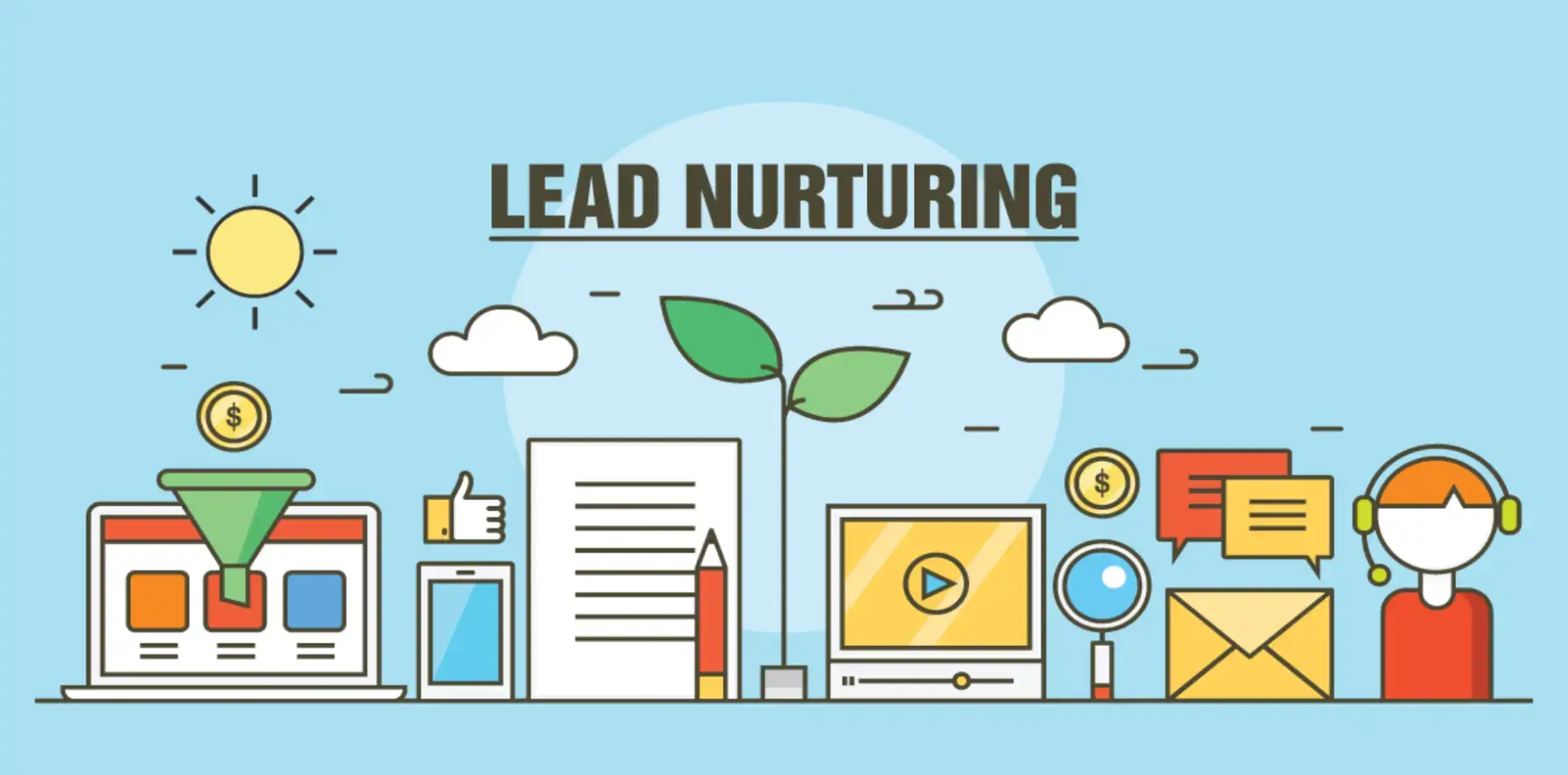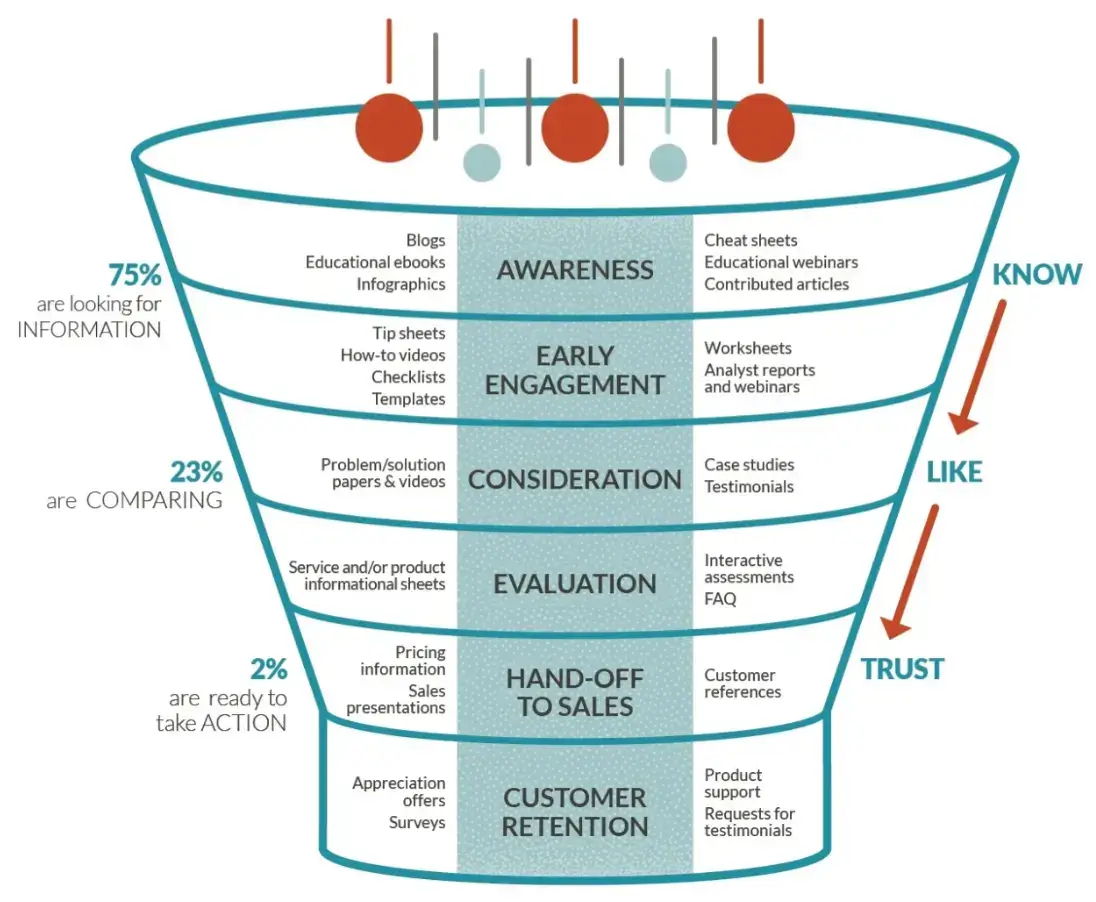Are you tired of sending the same generic email campaign to every lead on your list? With AI, you can personalize your lead nurturing process and increase conversions!
AI, or Artificial Intelligence, is a powerful tool that has revolutionized many industries, including marketing. AI-powered lead nurturing is not only the future but also the present.
This transformational technology is reinventing traditional lead nurturing, making it more personalized and effective than ever before.
By leveraging its capabilities, you can deliver hyper-personalized content and experiences to your leads, making them feel valued and increasing their chances of converting into customers.
In this step-by-step guide, we will walk you through how to use AI for personalized lead nurturing.
In this article:
- Understanding AI for Lead Nurturing
- What are the Benefits of AI in Lead Nurturing?
- How to Use AI for Personalized Lead Nurturing: The Step-by-Step Guide
- Common Challenges of Using AI for Personalized Nurturing
- Future Trends in AI for Lead Nurturing
What is Personalized Lead Nurturing?

Source: vegarise.com
Personalized lead nurturing is a strategic and targeted approach to engaging potential customers. It involves providing relevant content and interactions based on their needs, preferences, and behaviors.
A Generative AI Development Company can create personalized lead nurturing strategies tailored to individual customer needs.
Unlike traditional lead nurturing, which sends the same message to all leads, personalized lead nurturing tailors the message to each lead's unique profile, increasing the likelihood of conversion.
This strategy utilizes key data about the lead, such as browsing habits, past purchases, or interactions with your brand, to deliver the right content at the right time.
The goal is to create a more meaningful connection with each lead, facilitate their journey down the sales funnel, and foster a more individualized relationship with your brand.
Understanding AI for Lead Nurturing

Source: Freepik
Artificial Intelligence uses computer systems to perform tasks that usually require human intelligence, such as problem-solving, decision-making, and learning.
AI-powered lead nurturing uses machine learning algorithms to analyze large amounts of data and identify patterns and trends in individual leads' behaviors.
This enables marketers to understand better each lead's interests, preferences, and intentions, empowering them to deliver personalized content and experiences that resonate with the lead's needs.
What are the Benefits of AI in Lead Nurturing?
AI plays a pivotal role in many aspects, including generating high-quality AI headshots. Its role in lead nurturing is substantial, offering a wide range of benefits that can dramatically improve marketing effectiveness.
Here's why you should consider integrating AI into your lead nurturing strategy:
- Improved Personalization: AI uses data to understand each lead's interests and needs.
- Better Engagement: Relevant content increases your chances of engaging leads.
- Increased Efficiency: AI automates tasks like sending emails and analyzing data.
- Data-driven Decisions: AI analyzes massive datasets for actionable insights.
- Enhanced Lead Scoring: AI identifies hot leads more likely to convert.
- Greater Conversion Rates: Personalized content → better conversions.
Example: higher conversion rates. - Continuous Learning: AI evolves over time as it reacts to new data.
How to Use AI for Personalized Lead Nurturing: The Step-by-Step Guide
Now that you understand the benefits and importance of AI in lead nurturing, let's explore the step-by-step process of implementing it.
Step 1: Set your objectives

Source: strengthcoachglasgow.co.uk
Identify what you want to achieve: improved personalization, increased efficiency, or higher conversion rates.
These goals should be measurable so you can track progress and adjust strategies.
Ultimately, defining clear objectives ensures your AI strategy aligns with your broader marketing strategy.
Step 2: Preparing for AI implementation
Before implementing AI, assess your existing lead nurturing strategies. Identify your data sources — CRM data, website analytics, and social media engagement.
Understanding your current situation sets a strong foundation for successful AI-driven lead nurturing.
Step 3: Choosing the right AI tools
Organizations without in-house AI expertise often work with an AI consulting company to guide implementation.
Research available AI platforms and compare their capabilities.
Look for tools that integrate smoothly with existing systems and offer "just right" levels of complexity — enough features to be effective but not overwhelming.
Step 4: Data preparation and cleaning

Source: LinkedIn
Clean your data by removing duplicates, resolving missing values, and correcting inaccuracies. Structured, organized data helps AI systems process information efficiently.
Step 5: Implementing personalization with AI
Start by developing customer profiles. AI tools like Paraphrasing Tool can enhance content creation.
Tools such as SmartWriter and Omnisend analyze data to generate detailed customer profiles. These profiles capture behaviors and preferences that enable more effective messaging.
AI automates this personalization at scale, ensuring every message resonates more deeply with each lead.
Tools like Storydoc use AI to help you create personalized, interactive presentations that adapt to your lead’s profile - boosting engagement and helping you stand out in a crowded inbox.
Step 6: Integrating AI into lead nurturing workflow

Source: jonespr.net
Ensure AI fits seamlessly into your existing workflow.
AI should enhance — not disrupt — your operations. Communicate changes with your team and maintain the balance between automation and human oversight.
Step 7: Testing and optimization

Source: Optimizely
Conduct A/B testing to evaluate personalized strategies.
Example: A/B testing guide
Optimization is an ongoing cycle of testing, learning, and refining.
Step 8: Monitoring and analytics
Set up performance tracking systems. Monitor engagement levels and identify trends. Are certain leads responding more to personalized content?
Use analytics to adjust strategies in real time, ensuring continuous improvement.
Common Challenges of Using AI for Personalized Nurturing

- Data Privacy Concerns
- Complexity of AI Algorithms
- Lack of Human Element — e.g., content feels robotic
Reference: the human touch - Data Integration Issues
- Cost of AI Tools
Future Trends in AI for Lead Nurturing

- AI + Machine Learning Integration
- Predictive Personalization
- Voice AI in Customer Interactions
- AI-Driven Content Creation
- Real-time Analytics
FAQs
1. How do you use AI for branding?
AI helps shape brand messaging, personalize content, and streamline customer service through chatbots and automation.
2. Can AI be used for lead generation?
Yes — AI identifies potential leads, personalizes outreach, and nurtures leads with automated communication.
3. How can AI improve customer experience?
AI provides personalized recommendations, streamlines service, and predicts customer behaviors.
4. What are the key benefits of using AI for lead nurturing?
Key benefits include improved personalization, increased efficiency, better analysis, and scalability.
Takeaway
AI reinforces continuous learning, adjustment, and optimization in lead nurturing.
Integrating AI is a long-term strategy. Benefits include enhanced personalization, efficiency, insights, and real-time optimization.
Start small, learn iteratively, and scale over time. Even small AI-driven improvements can dramatically transform your lead nurturing success.

Author Bio
Paul Aroloye owns the #1 AI Review Blog and helps websites rank on Google. You can contact him here.

